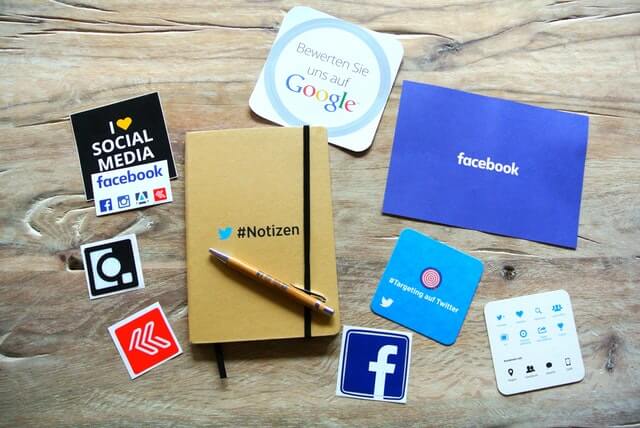Today’s topic is all about generating, ideally positive reviews for your business. As well as what do you do when a negative review comes in or someone submits something to the Better Business Bureau or puts in a formal complaint?
When I look at the whole process of review generation such as asking your customers for reviews, it can often be a pretty messy process. But I’m going to give you some strategies as to how you can legally and ethically generate these reviews, including what you can do if something comes in that just isn’t favorable, which definitely is going to happen.
Let’s first look at and focus on generating reviews. Basically, this should be one of those processes and systems that you just have in your daily and weekly routine for yourself and for your staff. I would highly suggest you get some kind of software tool to really help facilitate this. We’ve actually built our own software tool, but there are plenty of software tools, like birdeye.com, for example. Actually, it really depends on the type of business that you’re in and I guess how robust you would like these reviews to come in. There are some software tools, one of which is called SoTellUs that really focuses more on trying to generate video reviews. So again, there’s a lot of review generation tools and software programs. The reason that I like to use a tool is it just takes it from having to be a chore, and from having to be this full-blown process to just being a little bit more streamlined within a tool.
So that’s step one is you want to get a tool and then you want to build it into your systems and processes so that ideally this is being done weekly or monthly, depending on the volume of the number of customers that you have. If you’re in a high-turn business where you’re dealing with new customers daily, then you probably want to be doing this once or twice a week. However, if you’re only bringing in a handful of new customers once a month, you’d be doing this once a month. So it kind of really depends on the nature of your local business.
From there, and with the software tools, the thing that you have to keep in mind — this is where a lot of local businesses get themselves in trouble — is that they have something in writing that says “if you leave us a positive review, we are going to give you x”. That basically goes against all the different terms of services and such for the different tools like Google, Facebook reviews, Yahoo, Yelp, etc. You cannot incentivize someone to leave a positive review—the keyword there is incentivize.
Now, if I were to tell you, are people doing this day in and day out? The short answer is yes. So I will give you some more notes and things like that around this. The thing that I want you to look at is you can definitely encourage people to leave reviews. I would start asking for reviews. I would put things up on your website that makes it easy for them to leave reviews. If you have that software tool, they can click on it and easily leave a review. I want to make sure that you get into the habit of asking, and what you want to do with asking is, simply say “we’d love to hear about your experience”. As long as you’re not putting it out there that “leave us a five-star review” where you’re basically subliminally telling them, “if you had a positive experience, you better tell us about it. And if not, we really don’t want to hear about it.” As long as you’re being neutral and you’re following the different terms of service, then you’re as good as gold. And you can make it easy, so you can have different links and things like that so that people can easily do that.
As long as you’re not insinuating that they have to do something in order to get rewarded, then you’re fine. Now, what I do encourage you to do though, is everyone that leaves a review, again, you want to make sure that you’re not putting “leave us a five-star review”. Once a month, you can put them in a drawing for a gift card to your business — you can do a gift card to Amazon or whatever else you’d like to do. So it simply would be saying, “leave us a review”. And you want to be driving them to the platform that you would prefer the review on.
So if you know that your business is largely Google-driven, drive them to Google, if your business is more social, you want to be driving them to Facebook. Again, the advantage of using third-party software tools is when they click on that link, it can automatically direct them to the place that you’re looking for that review on. So put them into a drawing and that’s just a way to encourage, but not necessarily incentivize every single person. So once a month, everyone that leaves a review, they’re going to be entered to win. And you’re going to give away this prize on the first of the month like clockwork.
So that’s kind of a little bit of the strategy around generating reviews. Now with the software tools, you can have it be connected to your customer relationship management center. So anytime you get a new customer, a week later it kicks out an email, for example. You can then integrate it with text messages or with voice broadcasts and different things like that. So there’s a lot of really interesting things that you can do.
Now on the flip side, what happens when someone leaves you a negative review whether it’s a one-star, two, three, even in a five-star review, but they give you a bunch of negative feedback — there’s a lot of different ways. So if they’re leaving you any kind of negative feedback, in general, there’s a process that I would recommend that you follow.
The first thing is you want to make sure that you are replying to that particular feedback with a nonemotional response and as close to real-time as possible. So even initially, if you’re saying something along the lines of “Appreciate your feedback, we always enjoy hearing from our customers. Sorry to hear about your experience, we’re going to look into this,” then you can at least show that you’ve taken some kind of action. You’ve heard their comment, and you’re going to look into it and really that’s all the people are typically looking for is to be heard. So that is step one.
Step two is you want to go in and do a little bit of investigating of what actually ended up happening? As you start to then go through and investigate what actually happened, that’s when you can end up contacting the customer individually and you can start to post a more robust reply, if that makes sense. But you want to make sure that you’re always keeping a non-emotional tone. And I’ll be honest with you, I have gotten emotional with some of my customers if they’ve gotten me really heated for whatever reason. And that’s the wrong thing to do. You want to respond in a non-emotional tone, “We’ll look into it.” And then from there, you just take whatever kind of corrective action that you feel you need to take.
However, from a social standpoint, the goal is that you’re just showing that you’re replying that there’s someone behind the company that it’s not just as big a conglomerate that you’re actually there to listen and give feedback and you’re hearing your customers. You might say, “Well, doesn’t that crush our business anytime someone leaves a negative review?” Not necessarily. As long as you’re showing that you replied, and in a perfect world, the person may amend their review and say, “Well, I didn’t have a great first experience, but the owner reached out and he/she ended up helping rectify the issue. And I really appreciate that they did that.”
So sometimes people will update their reviews or at very least, they will add some more context. And then really, what I want you to focus your time on is making sure that you’re just constantly generating reviews on a regular basis, and ideally, you’re doing a great job. Ultimately, the positive reviews are gonna easily outweigh any and all of the potential negative reviews so that if you do get a few negative reviews here and there, you’re showing that you replied, but you’re able to very quickly mitigate those potential reviews in terms of your score going way down.
Step one, get a software tool.
Step two, put your systems and processes in place so that you’re asking for and generating these reviews on a regular basis.
Step three, you want to make sure that you’re just responding to positive and negative reviews.
Hope you enjoyed today’s episode. Like us, share it, and spread the love. Have a wonderful rest of your day and I’ll see you back here tomorrow.
Get out there, make a change, and take some action.









